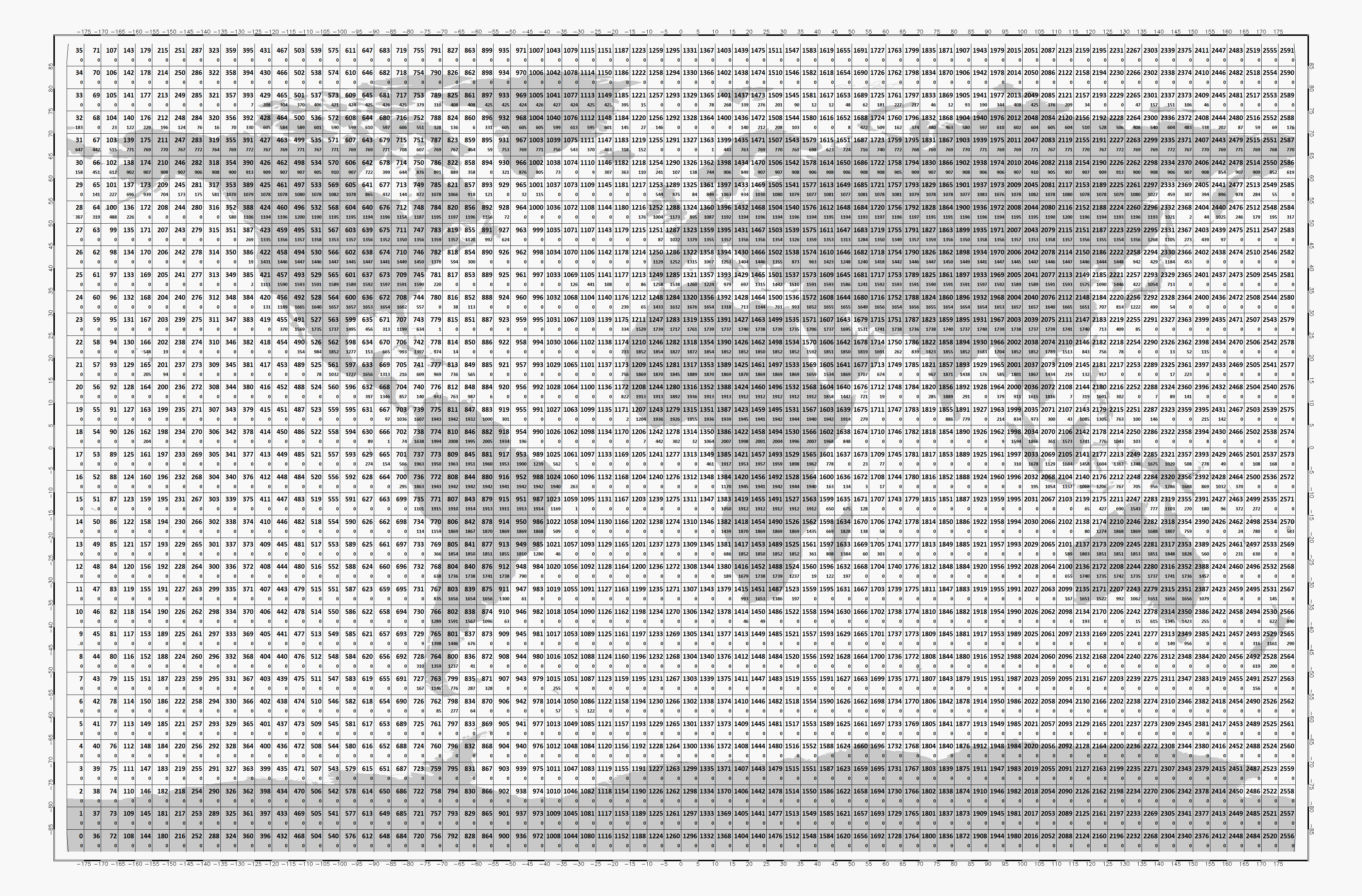Conversion to time series format¶
For a lot of applications it is favorable to convert the image based format into a format which is optimized for fast time series retrieval. This is what we often need for e.g. validation studies. This can be done by stacking the images into a netCDF file and choosing the correct chunk sizes or a lot of other methods. We have chosen to do it in the following way:
Store only the reduced gaußian grid points since that saves space.
Further reduction the amount of stored data by saving only land points if selected.
Store the time series in netCDF4 in the Climate and Forecast convention Orthogonal multidimensional array representation
Store the time series in 5x5 degree cells. This means there will be 2566 cell files (1001 with reduction to land points) and a file called
grid.ncwhich contains the information about which grid point is stored in which file. This allows us to read a whole 5x5 degree area into memory and iterate over the time series quickly.
This conversion can be performed using the ccism_reshuffle command line
program. An example would be:
ccism_reshuffle /cci_images /timeseries/data 2000-01-01 2001-01-02 --parameters sm sm_uncertainty --land_points True
Which would take ESA CCI SM data stored in /cci_images over land from January 1st
2000 to January 2nd 2001 and store the parameters for soil moisture and its uncertainty as time
series in the folder /timeseries/data.
Note: If a RuntimeError: NetCDF: Bad chunk sizes. appears during reshuffling, consider downgrading the
netcdf4 C-library via:
conda install -c conda-forge libnetcdf==4.3.3.1 --yes
Conversion to time series is performed by the repurpose package in the background. For custom settings
or other options see the repurpose documentation and the code in
esa_cci_sm.reshuffle.
Reading converted time series data¶
For reading the data the ccism_reshuffle command produces the class
CCITs can be used:
from esa_cci_sm.interface import CCITs
ds = CCITs(ts_path)
# read_ts takes either lon, lat coordinates or a grid point indices.
# and returns a pandas.DataFrame with all reshuffled variables.
# e.g. timeseries for lon=45°, lat=15°:
ts = ds.read_ts(45, 15)